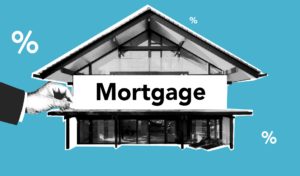
In Canada, interest rates play a crucial role in the economy, affecting everything from mortgage costs to overall consumer spending. The Bank of Canada (BoC) influences these rates through its overnight rate, which is the rate at which banks lend to each other. When the BoC changes the overnight rate, it impacts both fixed and variable mortgage rates, though each type is determined differently.
Fixed Mortgage Rates: Driven by Bond Yields (and Influenced by U.S. Bonds)
What are Fixed Rates? Fixed mortgage rates stay the same over the mortgage term, offering stability and predictable payments.
How are They Determined? Fixed rates are based on Government of Canada bond yields, primarily the 5-year bond yield, since five-year fixed terms are popular. When Canadian bond yields rise, fixed mortgage rates generally increase; when yields fall, fixed rates tend to drop.
Why Do U.S. Bonds Matter? The Canadian bond market is heavily influenced by the U.S. 10-year Treasury bond yield, which serves as a global benchmark. Here’s how:
- Investor Behavior: Investors often compare yields in Canada and the U.S. When U.S. 10-year bond yields rise, Canadian bond yields tend to follow to remain competitive. This can drive up Canadian fixed mortgage rates.
- Currency Impact: Higher U.S. yields can attract global investors to U.S. bonds, potentially weakening the Canadian dollar if investors sell off Canadian bonds in favor of U.S. ones. A weaker dollar can lead to higher inflation expectations in Canada, which can push bond yields and fixed rates up as well.
So, while Canadian bond yields are shaped by local economic factors, they often mirror U.S. trends, especially when U.S. rates rise significantly. As a result, rising U.S. bond yields often lead to increased Canadian fixed mortgage rates, even without a direct change in Canadian economic conditions.
Variable Mortgage Rates: Tied to the Bank of Canada’s Overnight Rate
What are Variable Rates? Variable mortgage rates fluctuate based on the BoC’s overnight rate, so the interest rate (and monthly payments) can change over the term.
How are They Determined? Variable rates depend on the Bank of Canada’s overnight rate, which influences the prime rate that banks use to set variable mortgage rates. When the BoC raises its overnight rate, variable rates increase, and vice versa.
The BoC’s rate decisions are based on:
- Inflation: To curb high inflation, the BoC may raise rates. Lower inflation could lead to rate cuts.
- Economic Growth: Strong growth can prompt rate hikes, while weak growth may bring cuts.
- Global Economic Conditions: The BoC watches global trends, especially in the U.S. If the U.S. raises rates, Canada may follow to avoid large exchange rate fluctuations.
Key Differences
- Market Influence: Fixed rates follow the bond market (with the U.S. bond yield as a key influencer), while variable rates follow the BoC’s overnight rate.
- Stability vs. Flexibility: Fixed rates offer predictability, while variable rates offer potential savings but are riskier if rates rise.
- Who They Suit: Fixed rates suit those who value predictability, while variable rates suit those comfortable with risk and potential savings.
In summary, Canada’s mortgage rates are shaped by both local and international forces. Fixed rates are influenced by Canadian bond yields, which are affected by U.S. bond rates, especially the 10-year Treasury yield. Meanwhile, variable rates follow the Bank of Canada’s overnight rate, reflecting domestic economic conditions. Understanding these relationships can help Canadian borrowers make informed choices about their mortgages.